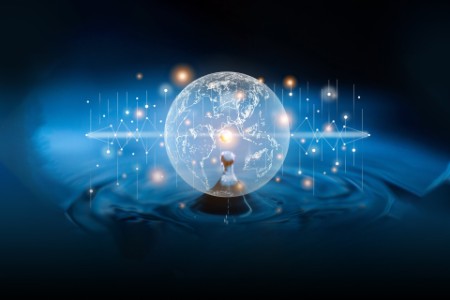Detecting leakage and theft
Leakage is a major issue in water distribution systems. Integrating data from various sources of distribution can help water distribution companies control leaks and avoid wastage. Currently, most leak detection systems are based on manual procedures. AI and ML applications are a promising avenue for companies as they can ensure the safety of vast water supply networks.
Electronic and digital systems like pressure and acoustic sensors, connected to the network through centralized and cloud-based monitoring systems, can detect and pinpoint leaks in real time. Advanced AI and ML, combined with statistical methods, can help detect water leakage and predict pipe bursts in distribution networks. For instance, the trained Autoencoder (AE) neural network, an unsupervised ML model, can now point out leaks more accurately and reduce the occurrence of false alarms. This, along with smart meters, can reduce water wastage and thus save costs.
Data acquisition, AI-based digital assistants, operational data, networking, and integration system can enable the automation of all the technical and organizational processes and value chains for a water distribution network system. Merging this data into a digital twin will help water distribution companies optimize plant design, operation, and maintenance. Digital twins will also help detect pipeline leakages based on flow rates, to facilitate repairs after a pipeline rupture and reduce non-revenue water. Data from IoT devices can be visualized using digital twins and can help in mapping, 3D modeling and managing water management assets. It also helps in advanced tracing, identify system and customer impact during outage events and disaster management teams to be proactive to potential vulnerabilities.
For households and buildings, AI-based smart metering can help understand their usage patterns and reduce consumption.
Other areas
AI-ML models can also aid in controlling and managing water reservoir systems, from measuring water levels to predicting risks. AI-based flood predictions and forecast systems help governments to take necessary actions and reduce calamities and destructions. For instance, the Central Water Commission under the Ministry of Jal Shakti, in collaborating with a technology MNC, is using ML and inundation modeling that uses real-time river measurements to forecast floods and send alerts to those in affected regions. These predictions are done in real-time with large data sets. The solution is being scaled to cover most river systems in India.
Approximately 70% of the world's freshwater is used by the agricultural industry. Applying a more intelligent approach to water management by deploying AI-based precision irrigation systems, computer algorithms and modeling is already benefiting farmers in many countries, including India. Apart from these, various governmental and water research organizations are relying on ML models to predict the availability of groundwater and to analyze its characteristics. Compared to physical models, data-driven models help determine specific groundwater characteristics accurately, with a lower number of input data and easier model structures.
With more data analytics, cloud-based AI tools, smart sensors, and ML applications flowing to track and manage the world’s most valuable natural resource. Water 4.0, or Smart Water, is soon going to become a reality that will help organizations, industries, and governments march toward their Sustainable Development Goals.


